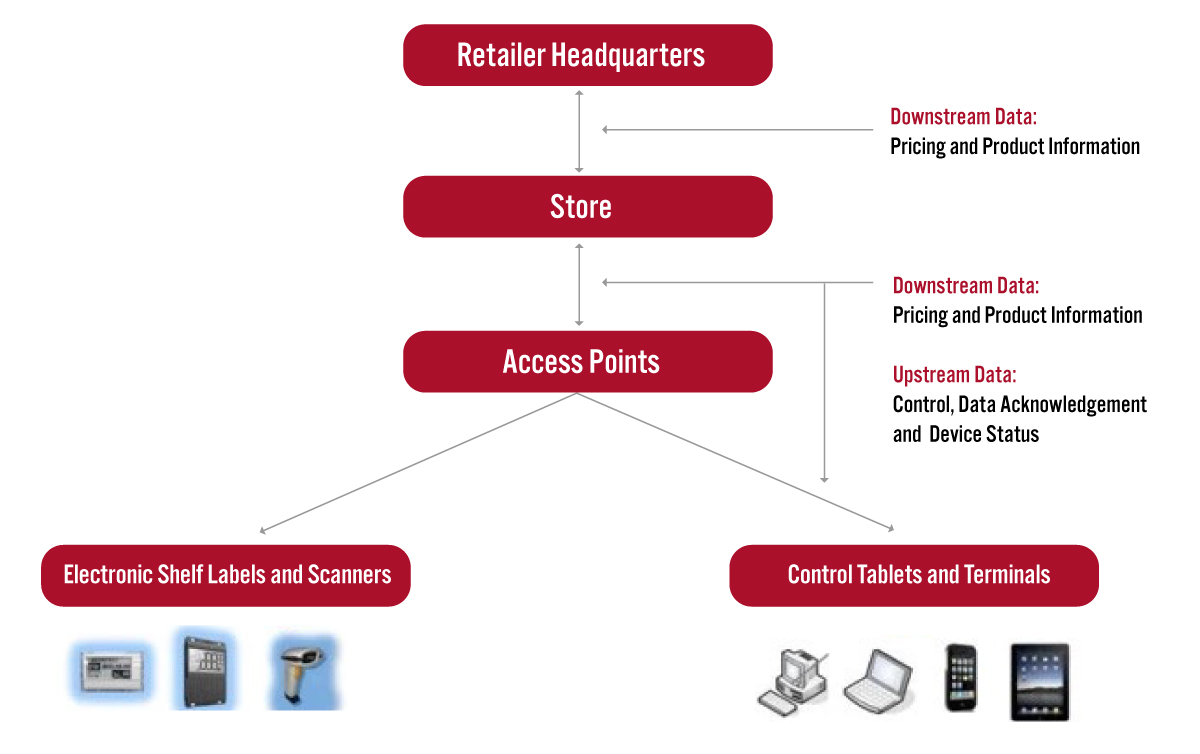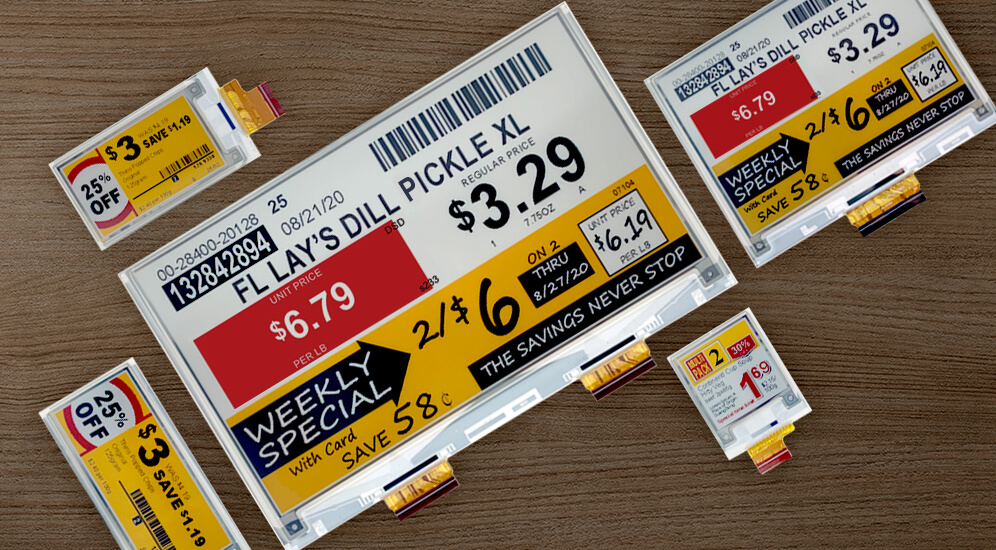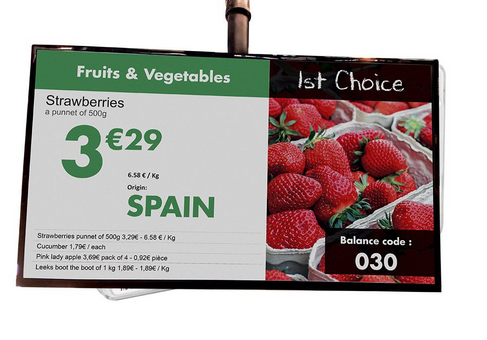
DIpil Das
What’s the Story?
Electronic shelf labels (ESLs) enable retailers to use automation to set prices on items and provide information to consumers. Their on-shelf location within the store is key, since ESLs are uniquely able to interact with both consumers and inventory. In this report, we discuss the functions and components of ESLs and the benefits that they offer to retailers and consumers. We outline recent developments in the global market and leading vendors of the technology.Why It Matters
Retailers remain under constant and increasing pressure from the encroachment of e-commerce and rising competition—both domestic and international—to become more efficient and offer a better customer experience. ESLs offer a key location within the store to communicate pricing, product information and infotainment to consumers, and the technology supports retailers in maintaining profitability through pricing accuracy. The case for ESLs is perhaps most compelling for grocery, where retailers must price as many as 30,000 SKUs (stock-keeping units), which presents enormous complexity and room for mispricing. Other retail sectors using ESLs include beauty, consumer electronics, drugstores, fashion, home and home improvement, and manufacturing. We estimate global spending on ESLs to be about $850 million in 2021, or about 0.5% of total global retailer capital spending (as estimated in our Market Outlook for retail technology), growing at 20% annually.Electronic Shelf Labels: In Detail
Function and Components of ESLs An ESL platform transmits data from the store’s network—typically via Wi-Fi, Bluetooth or optically—downstream into receivers mounted on the ESLs, which effect changes in pricing and other product and commercial information displayed on a screen. Information from other devices such as price scanners, tablets and PCs can also be sent upstream. The in-store network communicates with the corporate network, which sets the prices, as depicted in Figure 1.Figure 1. Functional Diagram of an ESL Platform [caption id="attachment_128323" align="aligncenter" width="725"]
 Source: Coresight Research[/caption]
Key metrics for ESLs include the following:
Source: Coresight Research[/caption]
Key metrics for ESLs include the following:
- Battery life
- Dynamic product location, i.e., geolocation within the store
- Inclusion of NFC chip
- Indicator flash guides
- Quality and reliability
- Speed of price refresh
- Type of display—LCD, segmented or e-ink
- Type of wireless network—optical or radio
- Upgradeability
- Radio frequency: Wi-Fi, RFID, NFC and analog radio
- Optical: infrared light
 Four-color e-ink display
Four-color e-ink display Source: E Ink [/caption] There is a spectrum of technology between small shelf labels and large-format displays. The image below shows a large-format store display that identifies prices but also can display promotions. [caption id="attachment_128348" align="aligncenter" width="725"]
 SmartPOSTER display
SmartPOSTER display Source: Pricer [/caption] Other Features Shelf tags may include embedded NFC (near-field communication) chips or QR codes, which enable the consumer to access supplemental product information with an equipped smartphone. Control Hardware and Software Much of the hardware in an ESL network is a commodity—for example, Wi-Fi routers and LCD displays—but the value is in the accompanying software, which comes with the tags and adds the intelligence and specific functionality. The software running in the corporate headquarters determines pricing, promotions and manages product locations within the store. Benefits of ESLs ESLs do more than just display prices; they drive financial gains for retailers. According to tag vendor SES-Imagotag, ESLs drive a 2%–5% increase in revenues, a 0.5%–1.0% increase in operating margin and a 30%–50% reduction in stock-outs. ESLs offer the following operational benefits:
- Reduce the cost of labor from pricing manually
- Eliminate the cost of paper price signs
- Ensure pricing accuracy
- Change prices rapidly
- Reduce food waste by providing alerts when items are near the end of their shelf life—Israel-based Wasteless offers an ML-based pricing solution for optimizing markdowns and fresh-waste reduction, for example.
- Help store associates to find product locations—thus enhancing inventory checking—by illuminating the shelf label of the product to be inventoried
- Enhance BOPIS services by interacting with route-planning software and guiding the store associate to the items to be picked
- Enable dynamic pricing to match prices online or due to changes in supply and demand
- Improve the store’s appearance through the use of technology, particularly color displays
- Reduce pricing errors
- Promote sustainability by eliminating the use of paper price signs and through low power consumption (batteries can last up to three years)
- Offer personalized product information and promotions through smart displays
Figure 2. Recent ESL Developments [wpdatatable id=1015 table_view=regular]
Source: Company reports Leading Technology Vendors and Innovators The ESL technology market is fragmented. Technology conglomerate Samsung is the largest provider by total revenues, but Pricer claims to be the world leader in ESL solutions (as well as in battery life). Displaydata claims market leadership in three-color ESLs.
Figure 3. Selected Leading ESL Vendors [wpdatatable id=1016 table_view=regular]
Source: Company reports/Owler/S&P Capital IQ/ZoomInfo There are also several innovators engaged in developing ESLs. We present a select few of these companies in Figure 4.
Figure 4. Selected Leading ESL Innovators [wpdatatable id=1017 table_view=regular]
Source: Company reports/Crunchbase Retailers Using ESLs In Figure 5, we provide examples of notable retailers that are currently using ESLs.
Figure 5. Selected Segments and Companies Using ESLs [wpdatatable id=1018 table_view=regular]
Source: Company reports Non-Retail Applications Non-retail applications of ESLs include labeling products and bins in manufacturing facilities and warehouses. For example, Pernod-Ricard’s winemaking operations use ePaper ESLs to identify blocks of grapes, and automotive and electronics manufacturer Bosch uses labels on its production line that display the part number, part description, family of the part and its positioning.
What We Think
ESLs offer many benefits to retailers beyond just saving labor and improving accuracy. They are able to guide store associates to items more efficiently for fulfilling BOPIS/curbside-pickup orders, which is essential in current pandemic-impacted retail environment. ESLs also enhance the in-store experience by offering additional product information and infotainment to shoppers. Implications for Brands/Retailers- Brands and retailers can offer supplemental product information beyond item labels to enhance the shopping experience.
- As screens get larger and more colorful, they can offer potentially personalized infotainment to consumers.
- Retailers can use the location features of ESLs to fulfill BOPIS/curbside-pickup orders more efficiently.
- Retailers and brands can use the promotional capabilities of ESLs to offer promotions, increasing sales and enhancing the customer experience.
- There are many opportunities for vendors to develop new display technologies or develop new wireless transmission methods.
- There are opportunities to develop more advanced software, such as using machine learning, to analyze ESL data.
- Smartphone apps can interact with ESLs in new and innovative ways.
- The shelf is becoming the hub of the retail store, and there are opportunities to capitalize on the interaction between ESLs, shelf cameras and other in-store sensors.